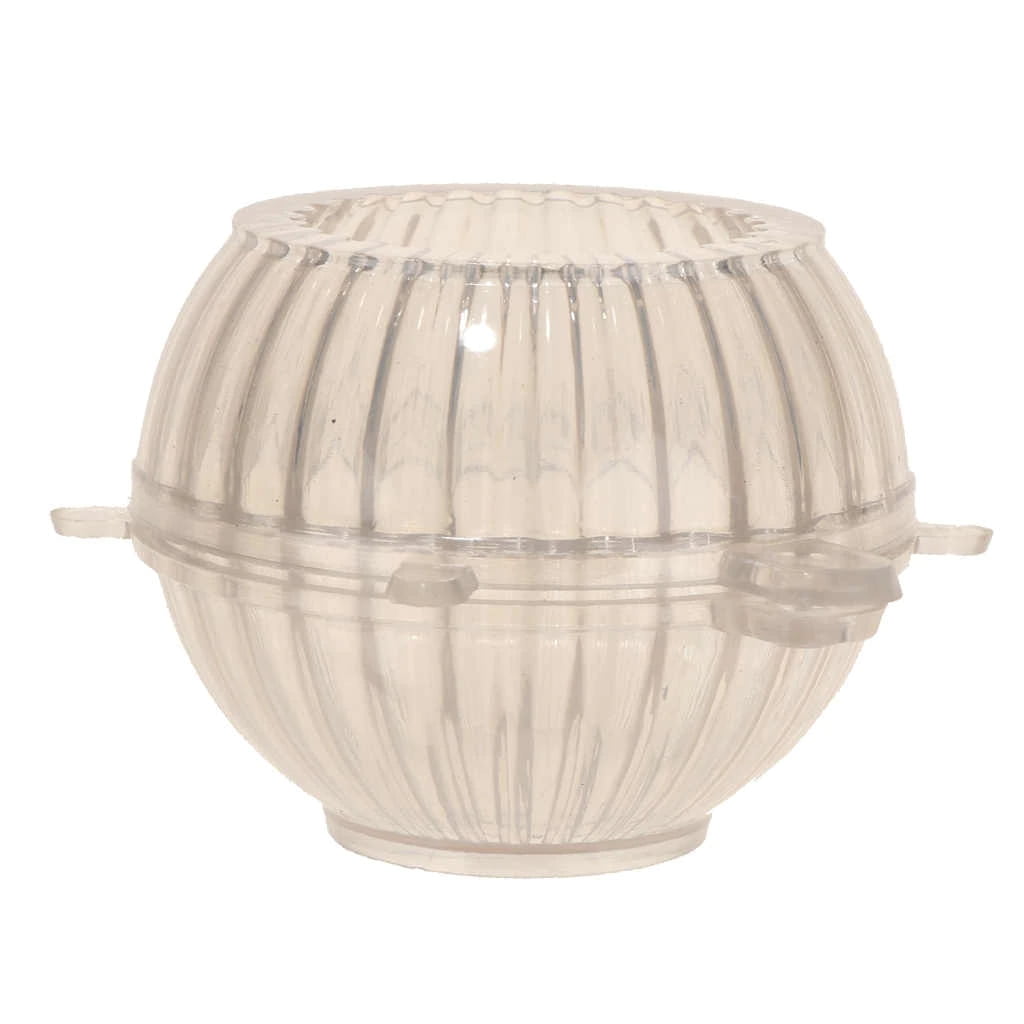In recent years, there has been a noticeable surge in the popularity of candle making as a creative hobby practiced at home. Enthusiasts are drawn to the artistry and personalized touch that comes with crafting their own candles. However, one key aspect that is often overlooked but essential to the process is understanding the concept of flashpoint in candle making.
Flashpoint refers to the temperature at which a substance can ignite when exposed to an open flame or heat source. In the context of candle making, knowing the flashpoint of your materials is crucial for safety reasons. It helps determine how to handle and store ingredients properly, reducing the risk of accidents during the crafting process.
Whether you are using fragrance oils, waxes, or additives in your candle making endeavors, each material has its own specific flashpoint that must be considered. By being aware of these different flashpoints, you can make informed decisions on how to work with them safely and efficiently. This knowledge not only enhances the quality of your candles but also ensures a smooth and enjoyable crafting experience.
Understanding Flashpoint in the Context of Candle Making
Flashpoint is a crucial concept to grasp in the world of candle making. It refers to the temperature at which a particular substance can ignite and produce a flame when exposed to an ignition source. Understanding the flashpoint of materials used in candle making is essential for ensuring safety during the crafting process. Different candle-making ingredients have varying flashpoints, which can impact how they should be handled and incorporated into your candles.
To determine the flashpoint of candle-making ingredients, there are several methods that can be used. One common way is to consult the material safety data sheet (MSDS) provided by the supplier or manufacturer. This document typically includes information on the flashpoint of the substance, among other important details. Additionally, you can use a specialized device called a flash point tester to measure the exact temperature at which a substance flashes.
When working with candles near their flashpoint, it’s crucial to take specific safety precautions to prevent accidents and ensure a safe crafting environment. Some key tips include keeping flammable materials away from heat sources, using appropriate containers and equipment designed for candle making, and working in a well-ventilated area to prevent buildup of fumes. By following these guidelines, you can create beautiful candles while prioritizing safety throughout the process.
The Significance of Flashpoint in Candle Making Safety
Flashpoint in candle making refers to the temperature at which the wax or fragrance oil used in candles will ignite if exposed to an open flame. Understanding the flashpoint of materials is crucial for ensuring safety throughout the candle making process. It not only helps prevent accidents such as fires but also plays a role in creating high-quality, long-lasting candles.
Different types of candle making materials have varying flashpoints, with some being more flammable than others. For example, some fragrance oils have lower flashpoints than others, meaning they are more likely to ignite when exposed to heat. By knowing the flashpoints of the ingredients you are working with, you can take necessary precautions to avoid potential hazards and ensure a safe candle making experience.
When working with materials near their flashpoint, it is essential to follow safety guidelines such as using a double boiler for melting wax, keeping flammable objects away from heat sources, and having proper ventilation in your workspace. Taking these precautions can help minimize risks and create a safe environment for crafting candles. Remember that safety should always be a top priority when engaging in any DIY project involving flammable materials like those used in candle making.
| Materials | Flashpoint (Fahrenheit) |
|---|---|
| Paraffin Wax | 370°F |
| Soy Wax | 600°F |
| Lavender Fragrance Oil | 125°F |
Different Types of Flashpoints in Candle Making Materials
When it comes to candle making, understanding the concept of flashpoint is essential for both safety and successful crafting. The flashpoint of a material refers to the temperature at which it can ignite if exposed to an open flame. Different types of materials used in candle making have varying flashpoints, which can impact not only the safety measures you need to take but also the overall quality of your candles.
To better understand the different types of flashpoints in candle making materials, here are some examples:
- Paraffin Wax: Paraffin wax, one of the most common candle-making materials, has a flashpoint ranging from 390°F to 680°F depending on its grade. It is crucial to heat paraffin wax slowly and carefully within this range to avoid any potential hazards.
- Soy Wax: Soy wax typically has a lower flashpoint compared to paraffin wax, around 185°F to 200°F. This means that it requires less heat during the melting process but still demands caution when handling.
- Essential Oils: Essential oils used for scenting candles have varying flashpoints based on their specific components. For example, citrus-based essential oils like lemon or orange have lower flashpoints compared to floral oils like lavender or rose.
Determining the flashpoint of your candle making ingredients is crucial for maintaining safety standards and producing high-quality products. There are simple methods to test the flashpoint of materials before starting your candle-making process:
- Use a thermometer designed for measuring high temperatures and monitor the heating process carefully.
- Refer to safety data sheets (SDS) provided by suppliers for detailed information on each material’s flashpoint.
- Perform a small-scale test batch with different heating temperatures to observe how each material reacts.
By understanding the various types of flashpoints in candle making materials and taking appropriate precautions, you can ensure a safe and enjoyable candle making experience while creating beautiful and aromatic candles for yourself or as gifts for others.
How to Determine the Flashpoint of Candle Making Ingredients
When it comes to candle making, understanding the concept of flashpoint is crucial for ensuring safety and successful crafting. Flashpoint refers to the temperature at which a particular material can ignite and produce a flame. In the context of candle making, the flashpoint of each ingredient used plays a significant role in determining how they should be handled during the process.
To determine the flashpoint of candle making ingredients, various methods can be utilized. One common approach is to consult the material safety data sheet (MSDS) provided by the supplier or manufacturer. This document typically includes information on the flashpoint of the ingredients, along with other important safety guidelines. Additionally, you can use a temperature-controlled device known as a flashpoint tester to accurately measure the flashpoint of different materials.
It is essential to note that different types of candle making materials have varying flashpoints. For example, fragrance oils generally have lower flashpoints compared to waxes and dyes. By knowing the flashpoints of each ingredient used in your candles, you can take appropriate safety precautions when working with them. Always remember to handle materials with lower flashpoints carefully and away from any potential sources of ignition.
| Ingredient | Flashpoint |
|---|---|
| Fragrance Oil | 100°F |
| Soy Wax | 150°F |
| Beeswax | 190°F |
Safety Precautions to Take When Working With Candles Near Their Flashpoint
When working with candles near their flashpoint, it is crucial to prioritize safety precautions to prevent any potential hazards. The flashpoint of a material refers to the temperature at which it gives off enough vapor to ignite when exposed to an open flame or spark. Understanding and being aware of the flashpoint of candle making ingredients is essential for ensuring a safe crafting environment.
Proper Ventilation
One key safety precaution when working with candles near their flashpoint is to ensure proper ventilation in your workspace. Adequate airflow can help dissipate any vapors that may be emitted from the materials you are using, reducing the risk of ignition. Make sure your workspace is well-ventilated by opening windows or using fans to circulate air effectively.
Use of Protective Gear
Another important safety measure is the use of protective gear when handling candle making materials near their flashpoint. Wear gloves, goggles, and a long-sleeved shirt to protect your skin and eyes from potential splatters or spills. Additionally, consider wearing a mask to prevent inhaling any fumes that may be released during the candle making process.
Keep Flammable Materials Away
It is also crucial to keep all flammable materials away from your candle making workspace, especially those with low flashpoints. Store these materials in a separate area and ensure they are properly sealed when not in use. By maintaining a clutter-free and organized workspace, you can minimize the risk of accidental ignition and create a safer environment for candle making activities.
By following these safety precautions when working with candles near their flashpoint, you can enjoy the creative process of candle making while minimizing potential risks. Remember that understanding and respecting the properties of the materials you are using is essential for ensuring a safe and enjoyable crafting experience.
Tips and Tricks for Successful Candle Making Using Flashpoints
Candle making has become a popular hobby for many people, as it allows for creativity and customization in creating unique scents and designs. Understanding the concept of flashpoint in candle making is key to ensuring not only the success of your candles but also your safety throughout the process.
Choosing the Right Materials
When it comes to successful candle making using flashpoints, selecting the right materials is crucial. Different waxes, fragrances, and dyes have varying flashpoints, which can affect how your candles burn and scent throw. Researching and experimenting with different materials can help you find the perfect combination that works best for your desired outcome.
Temperature Control
Maintaining the right temperature throughout the candle making process is essential when working with materials that have specific flashpoints. Heating your wax, fragrances, and other additives to the correct temperature ensures that they blend together properly without compromising their integrity. Investing in a reliable thermometer can help you achieve consistent results every time.
Testing and Adjusting
To ensure successful candle making using flashpoints, don’t be afraid to test and adjust your formulations. Conducting burn tests on your candles can help you determine if the flashpoint of your ingredients is ideal or if any modifications need to be made. Making small batches and keeping detailed records of your recipes can also lead to improvements in your candle-making skills over time.
By following these tips and tricks for successful candle making using flashpoints, you can elevate your craft and create high-quality candles that not only look beautiful but also perform well. Remember to prioritize safety by understanding the properties of the materials you are working with and taking necessary precautions to prevent accidents during the candle making process.
Exploring the Creativity and Artistry That Comes With Understanding Flashpoint in Candle Making
Candle making has become a popular hobby among DIY enthusiasts, allowing individuals to customize their home décor with unique scents and designs. One crucial aspect of candle making that is often overlooked is understanding the concept of flashpoint. So, what is flashpoint candle making? In simple terms, the flashpoint of a substance refers to the temperature at which it can ignite when exposed to a flame or spark.
When it comes to candle making, knowing the flashpoint of various ingredients is essential for ensuring safety during the crafting process. Different materials used in candle making have varying flashpoints, and being aware of these values can help prevent accidents like fires or explosions. By understanding the significance of flashpoint, hobbyists can make informed decisions about which ingredients to use and how to handle them properly.
Exploring the creativity and artistry that comes with understanding flashpoint in candle making opens up a world of possibilities for crafters. By knowing the flashpoints of different materials, candle makers can experiment with new combinations and techniques to create unique candles that suit their personal preferences. Whether it’s blending scents with different flashpoints to create complex fragrances or incorporating materials with high flashpoints for added safety, understanding this concept allows for endless creative opportunities in candle making.
Conclusion
In conclusion, understanding the concept of flashpoint in candle making is crucial for ensuring not only the quality of your candles but also the safety of your crafting process. By knowing what is flashpoint candle making and how it impacts the materials you use, you can create candles that burn smoothly and efficiently.
The significance of flashpoint lies in its ability to prevent potential hazards that may arise from working with flammable substances, offering peace of mind as you indulge in this creative hobby.
Moreover, determining the flashpoint of your candle-making ingredients empowers you to make informed decisions about their handling and usage. It allows you to tailor your process according to the specific requirements of each material, resulting in candles that are not only beautiful but also safe to use. By taking appropriate safety precautions when working with materials near their flashpoints, you can enjoy a worry-free candle-making experience and focus on honing your skills.
Ultimately, delving into the world of flashpoint in candle making opens up a realm of possibilities for creativity and artistry. By mastering this aspect of the craft, you can experiment with different materials and techniques to bring your unique vision to life through beautifully crafted candles.
Embracing the importance of flashpoint enhances your crafting experience, elevating it from a simple hobby to a fulfilling journey of exploration and self-expression. So next time you light a candle that you’ve lovingly crafted, remember how understanding flashpoint has contributed to making that moment truly special.
Frequently Asked Questions
What Is the Flash Point of a Scent?
The flash point of a scent refers to the temperature at which the fragrance oil can ignite or catch fire when exposed to an open flame or spark. It is an important safety consideration for handling scents.
What Does Flashpoint Mean in Oils?
In oils, flashpoint signifies the temperature at which the oil will ignite and produce a flame if exposed to a heat source. It is crucial information for safe storage and transportation of oils to prevent accidents.
What Is Wax Flash Point?
The wax flash point indicates the temperature at which a specific type of wax will release flammable vapors that could potentially ignite if exposed to a flame or spark. Understanding this is essential for safe candle making processes.

Welcome to my candle making blog! In this blog, I will be sharing my tips and tricks for making candles. I will also be sharing some of my favorite recipes.





